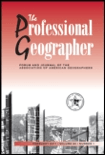
PROFESSIONAL GEOGRAPHER
Scope & Guideline
Navigating the Landscape of Geographical Knowledge
Introduction
Aims and Scopes
- Human-Environment Interactions:
This area explores the complex relationships between human activities and natural environments, emphasizing sustainability, resilience, and adaptation in the face of climate change. - Spatial Analysis and Geographic Information Science (GIScience):
The journal frequently publishes articles that utilize advanced spatial analysis techniques and GIS technologies to address various geographical questions, including urban planning, public health, and environmental management. - Social Justice and Equity:
A consistent focus is placed on understanding and addressing issues of social justice, inequality, and representation in geographical research, particularly concerning marginalized communities. - Cultural and Political Geography:
Research in this domain examines the cultural and political dimensions of geography, including identity, migration, and the implications of geopolitical changes on local communities. - Urban Geography and Development:
The journal highlights studies on urbanization, city dynamics, and the impacts of urban policies, particularly in relation to economic development and social inclusion. - Methodological Innovations:
The journal promotes methodological advancements in geography, including participatory mapping, mixed-methods approaches, and the use of digital technologies in research.
Trending and Emerging
- Climate Change and Environmental Justice:
There is an increasing emphasis on the intersection of climate change and social justice, with studies exploring how vulnerable communities are disproportionately affected by environmental issues. - Digital Geographies and Big Data:
The journal is witnessing a rise in research utilizing digital technologies and big data analytics to understand spatial phenomena, including social media data and remote sensing. - Health Geography:
Public health and geographical studies focusing on health disparities, access to healthcare, and the impacts of pandemics are gaining traction, reflecting the ongoing global health challenges. - Migration and Mobility Studies:
Research on migration patterns, mobility, and their socio-economic impacts is becoming a central theme, particularly in light of recent global migration crises. - Intersectionality in Geography:
There is a growing trend towards incorporating intersectional perspectives in geographical research, analyzing how various social categories (e.g., race, gender, class) intersect to shape spatial experiences.
Declining or Waning
- Traditional Physical Geography:
There is a noticeable decrease in publications focused solely on traditional physical geography, such as geomorphology and climatology, as the journal shifts towards more applied and interdisciplinary studies. - Historical Geography:
Research centered on historical geography has become less frequent, with a trend towards contemporary issues and immediate geographic challenges, such as urbanization and migration. - Quantitative Methods in Isolation:
While quantitative methods remain important, there is a waning focus on purely quantitative approaches without qualitative integration, as researchers increasingly favor mixed-methods strategies. - Geography Education:
Although education-related articles have been published, there is a decline in the frequency of discussions specifically focused on traditional geography education practices, reflecting a shift towards broader educational methodologies. - Local Case Studies in Isolation:
Research that solely emphasizes local case studies without broader implications or comparative analyses is becoming less common, as there is a growing interest in global and cross-contextual studies.
Similar Journals

Quaestiones Geographicae
Exploring the Boundaries of Geographical KnowledgeQuaestiones Geographicae, an esteemed open-access journal published by SCIENDO, serves as a vital platform for scholarly communication in the field of Earth and Planetary Sciences. Since its inception in 1979, the journal has been dedicated to promoting rigorous research and discourse in geography, encompassing a breadth of topics that reflect the dynamic nature of the discipline. With an impressive Impact Factor belonging to the Q3 quartile category, the journal actively contributes to the global scientific community's understanding of geographical phenomena. Its commitment to open-access publishing since 2010 ensures that groundbreaking research is accessible to a wider audience, facilitating collaboration and innovation. As part of its enduring legacy, Quaestiones Geographicae engages researchers, professionals, and students alike, inviting them to explore, share, and expand the boundaries of geographical knowledge.

GEOgraphia-UFF
Empowering Research Through Open AccessGEOgraphia-UFF is an esteemed open-access journal dedicated to the dissemination of innovative research and scholarship in the field of geography. Published by Universidade Federal Fluminense since 2014, this journal serves as a vital platform for researchers, professionals, and students to explore a diverse array of geographical topics, from human-environment interactions to urban studies and spatial analysis. With a pronounced commitment to accessibility and knowledge sharing, GEOgraphia-UFF promotes a collaborative academic environment, fostering dialogue and critical engagement among scholars worldwide. Located in the picturesque region of Rio de Janeiro, Brazil, the journal aims to bridge local insights with global geographical challenges, ensuring relevance and impact in the ever-evolving discourse of our discipline. This journal is an indispensable resource for anyone looking to stay at the forefront of geographical research.
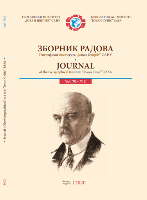
Journal of the Geographical Institute Jovan Cvijic SASA
Championing open access to geographical scholarship.The Journal of the Geographical Institute Jovan Cvijic SASA is a premier academic publication dedicated to advancing research and knowledge in diverse fields such as Demography, Earth-Surface Processes, Geography, Geology, and Tourism. Published by the Geographical Institute Jovan Cvijic SASA in Serbia, this Open Access journal has made significant contributions to the academic community since its inception in 1951, allowing for unrestricted dissemination of research findings globally. With an impact factor reflected in its 2023 Q3 quartile rankings across several categories, the journal underlines its relevance by maintaining a significant standing in the Social Sciences and Earth and Planetary Sciences domains, demonstrating engagement at a global level evidenced by its Scopus rankings. The journal's commitment to publishing high-quality, peer-reviewed articles makes it an essential resource for researchers, professionals, and students seeking to explore and enhance their understanding of geographical and environmental dynamics.
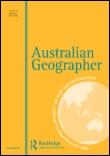
AUSTRALIAN GEOGRAPHER
Exploring the Depths of Geographic ScholarshipAUSTRALIAN GEOGRAPHER, published by Routledge Journals, Taylor & Francis Ltd, is a leading scholarly journal that captures the dynamic and multifaceted field of geography. With an ISSN of 0004-9182 and an E-ISSN of 1465-3311, this peer-reviewed journal has a long-standing tradition, dating back to its origins between 1928 and 1929, and is essential for those engaged in cutting-edge research in Earth-Surface Processes and Geography, Planning and Development. Recognized for its academic rigor, the journal holds a prestigious Q1 ranking in both Earth-Surface Processes and Geography categories as of 2023. Furthermore, its Scopus rankings underscore its influence, placing it in the top 30% of its field. Although it does not currently offer Open Access, AUSTRALIAN GEOGRAPHER remains a critical platform for presenting significant geographic research and fostering academic dialogue, making it indispensable for researchers, professionals, and students eager to contribute to the evolving landscape of geographic scholarship.

Cadernos de Geografia
Fostering Academic Excellence in Geographical ResearchCadernos de Geografia is a distinguished biannual journal published by UNIVERSIDADE DE COIMBRA, FACULDADE DE LETRAS, dedicated to the field of geography and related social sciences. With its ISSN 0871-1623 and E-ISSN 2183-4016, this journal has been a prominent platform for the dissemination of high-quality research since it became open access in 2012. Situated in Coimbra, Portugal, it aims to foster academic excellence by providing an inclusive space for innovative studies that explore contemporary geographical issues. Cadernos de Geografia encourages submissions that address diverse aspects of geography, ranging from environmental studies to urban planning, making it an invaluable resource for researchers, professionals, and students alike. As a part of the growing trend in open-access publishing, it enhances the global reach and accessibility of geographical research, thereby contributing to the enrichment of knowledge in the field.
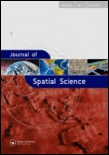
Journal of Spatial Science
Exploring the Frontiers of Spatial KnowledgeThe Journal of Spatial Science, published by Taylor & Francis Ltd, serves as a prominent platform for the dissemination of research in the interdisciplinary fields of geography, atmospheric science, and energy. With an ISSN of 1449-8596 and an E-ISSN of 1836-5655, this journal has established itself as a vital resource since its inception in 2004, boasting an impressive convergence period extending to 2024. Recognized in the Q3 quartile for Atmospheric Science and Energy (miscellaneous), and achieving a Q2 classification in Geography, Planning and Development in 2023, the journal not only reflects the evolving complexities of spatial science but also underscores its increasing relevance in addressing contemporary global challenges. The journal holds a commendable position in Scopus rankings, with notable placements in various categories, further highlighting its academic significance. Researchers, professionals, and students are encouraged to engage with the rich content offered, as the Journal of Spatial Science remains committed to advancing knowledge and fostering discussions pertinent to spatial analysis and its applications.
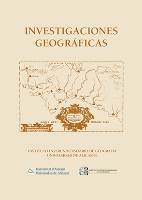
Investigaciones Geograficas-Spain
Unveiling the complexities of our planet through rigorous research.Investigaciones Geográficas-Spain is an esteemed academic journal published by the Universidad de Alicante, dedicated to advancing the fields of geography, planning, and development as well as earth and planetary sciences. With its commitment to open access since 1983, the journal ensures that research is readily available to a global audience, facilitating knowledge dissemination and collaborative discourse. As reflected in its 2023 Scopus rankings, it holds a commendable position within the Q3 category in both Earth and Planetary Sciences and Geography, Planning and Development, making it a noteworthy resource for scholars and practitioners in these disciplines. The journal's scope encompasses diverse geographical research, aiming to address pressing environmental and societal challenges through empirical studies and theoretical advancements. By contributing to the knowledge reservoir from Spain and beyond, Investigaciones Geográficas-Spain serves as a vital platform for researchers, professionals, and students seeking to enrich their understanding of geographical phenomena.
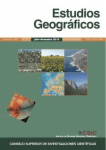
Estudios Geograficos
Unveiling Earth's Processes Through Open Access ResearchEstudios Geograficos, a prominent journal published by the CONSEJO SUPERIOR INVESTIGACIONES CIENTIFICAS-CSIC in Spain, serves as a vital platform for advancing the fields of geography and earth-surface processes. With an ISSN of 0014-1496 and E-ISSN of 1988-8546, the journal has been committed to Open Access since 1996, ensuring that its valuable research is accessible to a global audience. Recognized as a Q3 journal in both Earth-Surface Processes and Geography, Planning and Development, it plays a crucial role in shaping understanding and policy related to our planet. As of 2023, it holds a respectable rank of 562nd in Social Sciences Geography and maintains a percentile standing, reflecting its significance within the academic community. Covering a diverse range of topics, Estudios Geograficos aims to foster scholarly dialogue and disseminate innovative interdisciplinary findings, providing researchers, professionals, and students with critical insights and tools to address contemporary geographic challenges.

Information Geographique
Advancing Insights in Spatial AnalysisInformation Geographique is a prominent academic journal dedicated to the field of geographic information science, published by the esteemed ARMAND COLIN. With its ISSN 0020-0093 and E-ISSN 1777-5876, this journal serves as a critical platform for the dissemination of innovative research, addressing the multifaceted aspects of geography and spatial analysis. Information Geographique aims to foster a deeper understanding of geographic phenomena and promote interdisciplinary dialogue among researchers, professionals, and students. Although it does not currently offer open access options, the journal's rich content encompasses studies that span from traditional cartography to cutting-edge geospatial technologies. Established in 1976, it has played a vital role in shaping the discourse within its field and continues to contribute to the academic community with thought-provoking articles and insightful analyses.

Documents d Analisi Geografica
Illuminating Contemporary Geographical Challenges and SolutionsDocuments d'Anàlisi Geogràfica is a distinguished academic journal published by Universitat Autònoma de Barcelona, focusing on the fields of geography, planning, and earth-surface processes since its inception in 1988. With an Open Access policy implemented in 2012, the journal aims to facilitate the widespread dissemination of geographical research and insights, accessible to a global audience. Currently ranked in Q3 for both Earth-Surface Processes and Geography, Planning and Development categories, it serves as a vital platform for researchers, practitioners, and students to share their findings and enhance knowledge in these critical fields. The journal is indexed in Scopus, where it stands at rank #470 in Social Sciences and #106 in Earth and Planetary Sciences, reflecting its growing impact in relevant academic communities. Based in Barcelona, Spain, Documents d'Anàlisi Geogràfica continues to contribute substantially to geographical scholarship by exploring contemporary issues and advancements in a rapidly evolving world.